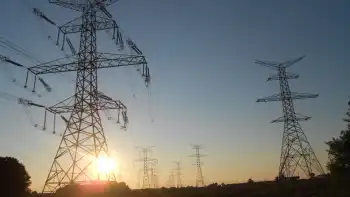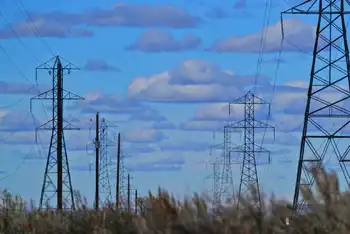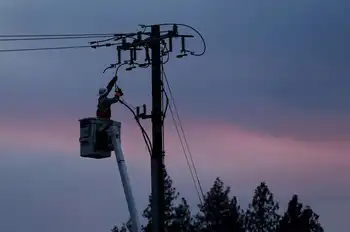New 98-megawatt power plant can generate electricity at times of highest demand
It went online in time for the temperatures in the high 90s late in May, when residents cranked up the air conditioning.
That's exactly what the $82 million "peaker plant" was designed to do - generate electricity at times of peak demand.
Before Riverside Public Utilities built the plant, it had to face the uncertainty and high cost of buying power from the spot market in times of high demand, utility officials said.
"Now, we're in control right away," Dave Wright, the utility's general manager, said.
It takes about an hour to bring up the plant, officials said.
The city opened a separate 40-megawatt power plant in July 2002.
With the two plants combined, the utility can now generate up to 136 megawatts.
In the heat, one megawatt can serve about 200 of the city's electricity customers, Steve Badgett, the utility's deputy director for energy delivery, said.
The two plants help the city avoid blackouts and will provide power for emergency services after a natural disaster, supplying hospitals, fire and police stations and emergency shelters, he said.
Tracy Dallarda, vice president of marketing for Riverside Community Hospital, said the city utility and 372-bed hospital work closely together. It's good to know that if the hospital's backup generators don't work in an emergency that Riverside Public Utilities will step in, she said.
The new, natural-gas-fired plant is located off Jurupa Avenue above the Santa Ana River, next to the city's wastewater-treatment plant.
The city certified that the plant was substantially complete in early May.
It features two General Electric 49-megawatt turbines. Each is licensed to operate for 1,200 hours a year, or 50 full days.
One of the two turbines was running the afternoon of May 31, when the mercury hit 98 degrees in Riverside. The shadow of heat waves it was producing rippled on the ground nearby.
The two battleship-gray structures housing the turbines vaguely resemble the "islands" or command centers on the decks of aircraft carriers.
The turbines are derived from airplane engines, Bob Gill, a principal engineer with the city utility, said.
But they are quiet enough that conversation near them is possible without shouting.
While it burns natural gas to create electricity, the plant is designed for reduced emissions.
"We purchased the latest and greatest as far as the technology," Gill said.
It takes a team of six people to operate the plant, he said.
The city originally expected the plant to open in July 2005.
A fight with labor groups, unexpected requirements imposed by the California Energy Commission and some late changes to the project all contributed to a delay and about $7 million in additional costs, utility officials said.
The city plans an official dedication ceremony on June 26, Badgett said.
Related News

Investor: Hydro One has too many unknowns to be a good investment
TORONTO - Hydro One may be only half-owned by the province on Ontario but that’s enough to cause uncertainty about the company’s future, thus making for an investment risk, says Douglas Kee of Leon Frazer & Associates.
Since its IPO in November of 2015, Hydro One has seen its share of ups and downs, mostly downs at this point. Currently trading at $19.87, the stock has lost 11 per cent of its value in 2018 and 12 per cent over the last 12 months.
This year has been a turbulent one, to say the least, as newly elected Ontario premier Doug Ford…





